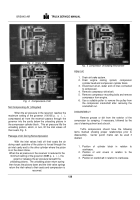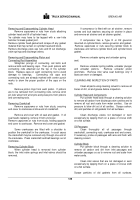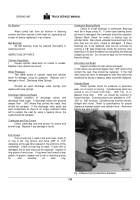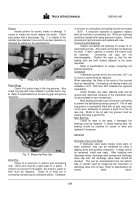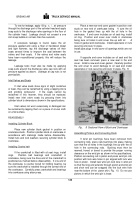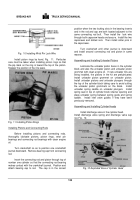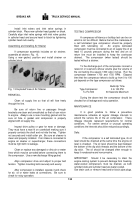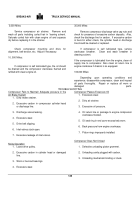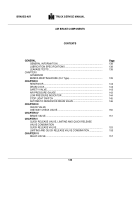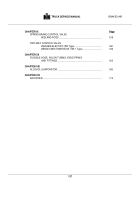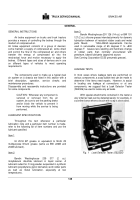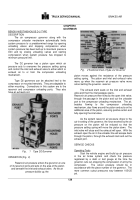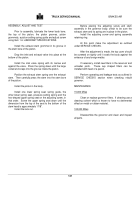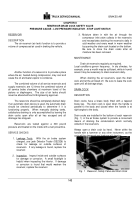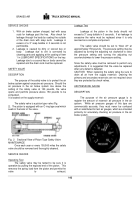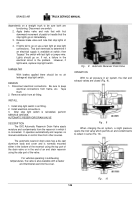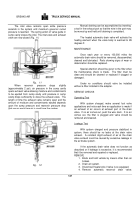TM-5-3805-254-14-P-2 - Page 140 of 894
TRUCK SERVICE MANUAL
BRAKES-AIR
GENERAL
GENERAL INSTRUCTIONS
Air brake equipment on trucks and truck tractors
provides a means of controlling the brakes through the
medium of compressed air.
Air brake equipment consists of a group of devices;
some maintain a supply of compressed air, some direct
and control the flow of the compressed air and others
transfer
the
energy of compressed air into the
mechanical force and motion necessary to apply the
brakes.
Different types and sizes of devices are in use
on different types of vehicles
to meet
operating
requirements.
The components used to make up a typical dual
air system on a chassis are listed in this section with a
brief
description, operation, service checks and
maintenance procedures.
Disassembly and reassembly instructions are provided
for some components.
CAUTION:
Whenever any component is
serviced or removed
from
the
air
system, be sure to set the parking brake
and/or block the vehicle to prevent it
from moving while the service is being
performed.
LUBRICANT SPECIFICATIONS
Throughout the text whenever
a
particular
lubrication note and a particular item number is made,
refer to the following list of item numbers and use the
lubricant specified.
Item 1
IH 251H EP grease or equivalent to NLGI #2
multipurpose lithium grease (same as BW 226M and
204M lubricant).
Item 2
Bendix
Westinghouse
239
377
(2
oz.)
molybdenum disulfide lubricant in liquid carrier. A
lubricant suited for O ring powder suspended in synthetic
lubricant (polyalkylene glycol derivative) and rubber parts
as well as
metal lubrication,
especially
at
low
temperatures.
Item 3
Bendix Westinghouse 291 126 (1/4 oz.) or BW 191
127 (2 oz.) silicone grease intended primarily for dynamic
lubrication between oil resistant rubber seals and metal
parts.
Meets
’ MILL4343A requirements.
Can be
used in serviceable range of 65 degrees F to +800
degrees F.
Causes less swelling and hardness change
of rubber parts than
normally
encountered
with
petroleum, based lubricants (approved source:
Dow Corning Corporation DC55 pneumatic grease).
LEAKAGE TESTS
In most cases where leakage tests are performed on
various components, a soap bubble test can be made to
determine if the items need repairs.
However, to assist
in locating any leakage at connections or at any
components, we suggest that a Leak Detector Tester
(SE2326) be used to locate any air leaks.
With special attachments contained in the tester a
very small air leak can be detected easily; for example, in
a confined area where a brush with soap is obstructed.
Back to Top

